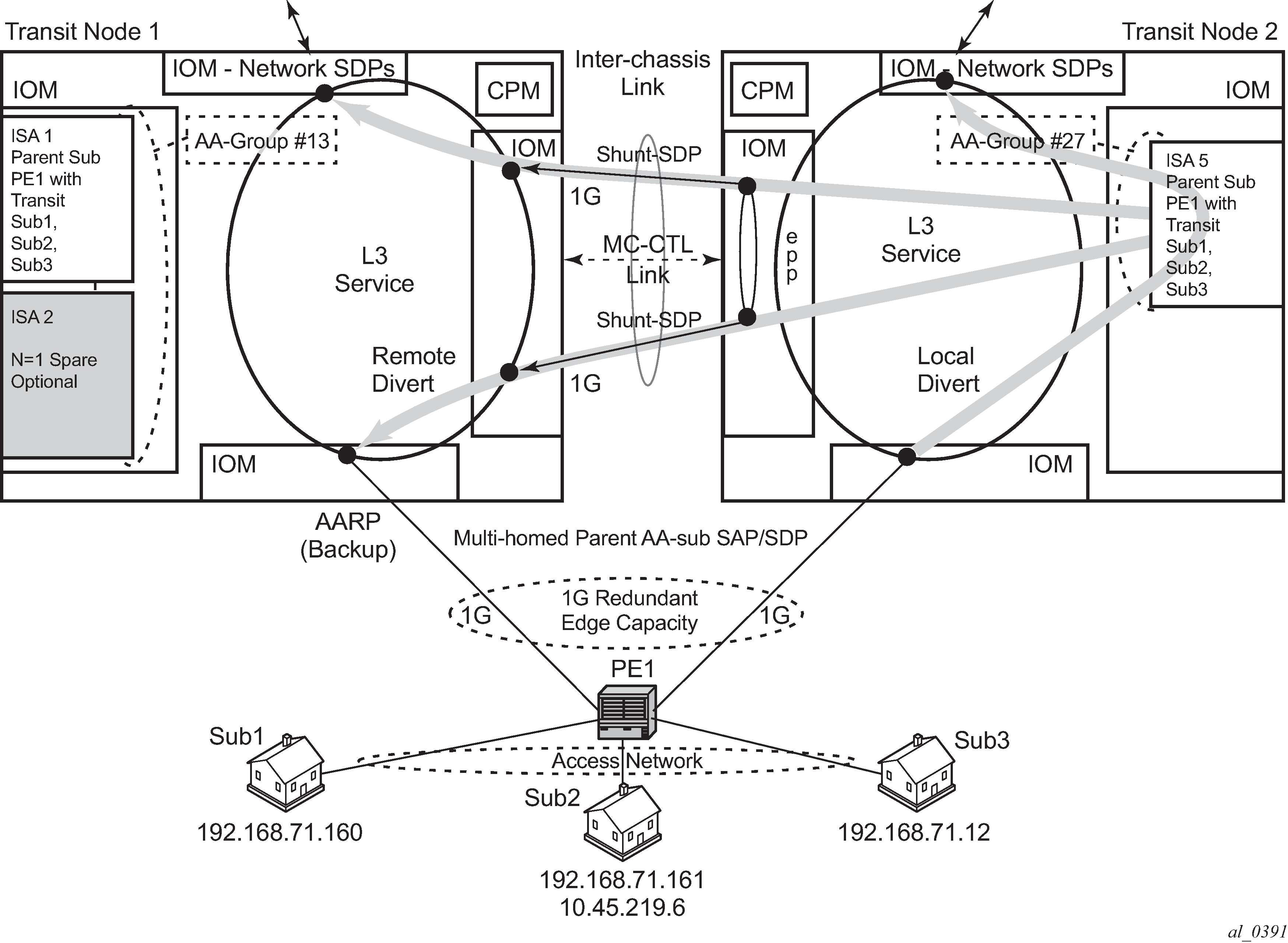Figure: Multi-chassis asymmetry removal functional overview shows an overview of the multi-chassis asymmetry removal functionality.

For a multi-homed parent AA subscriber, the parent SAP/SDP that is Active/Inactive per chassis is agreed by the inter-chassis AA Redundancy Protocol (AARP). For single node multi-homed endpoints, the AARP state is determined within a single node, as described later in the AARP operational states section.
Divert AA subscribers are cost-based load balanced across ISAs in each chassis/AA group (node-local decision).
Divert AA subscriber multi-homed pairing is supported by AA Redundancy Protocol (AARP) over inter-chassis link.
The same AARP ID is assigned to the divert SAP in both nodes.
AARP state in one node is master when all AARP conditions are met.
Packets arriving on node with the master AARP ID divert locally to ISA.
From sub packets on a node with backup AARP ID remote diverted over the subscriber side shunt, appearing to the ISA as if it was a local packet from the AA subscriber and returned to the network side interface spoke SDP shunt after ISA processing. To-sub packets on node with backup AARP ID remote divert over the network side shunt, appearing to the ISA as if it was a local network side divert packet for the AA subscriber, then returned to the subscriber side interface spoke-sdp shunt after ISA processing.
All packets are returned to the original node for system egress (sent back over the inter-chassis shunts).
If ISA N+1 sparing is available in a node, ISA sparing activates before AARP activity switch.
Supports asymmetry for business SAPs and spoke SDPs, with or without transit AA subs.
The AARP master-selection-mode is in minimize-switches mode by default, which is non-revertive and does not factor endpoint status. This can be configured per AARP instance using the master-selection-mode. The priority-rebalance configuration rebalances based on priority after the master failure condition is repaired. The inter-chassis-efficiency mode does priority based rebalance and includes the EP status for cases where an AARP activity switch is preferred to sustained ICL traffic load (when peer nodes are geographically remote).